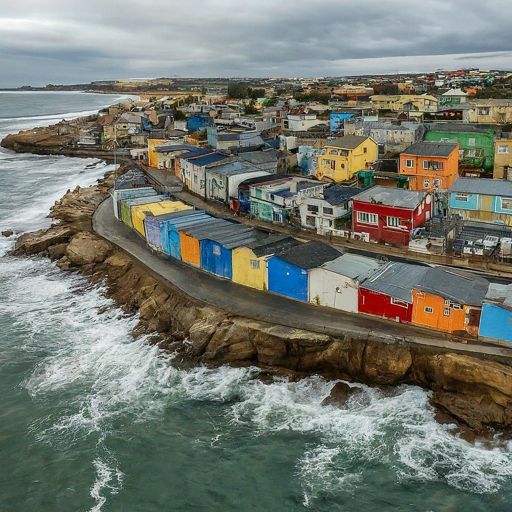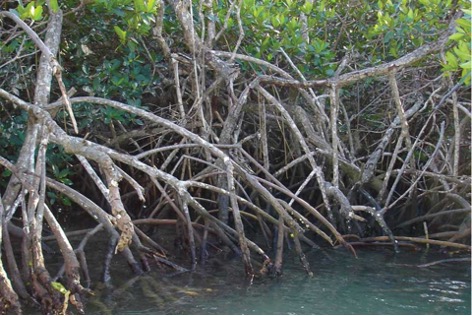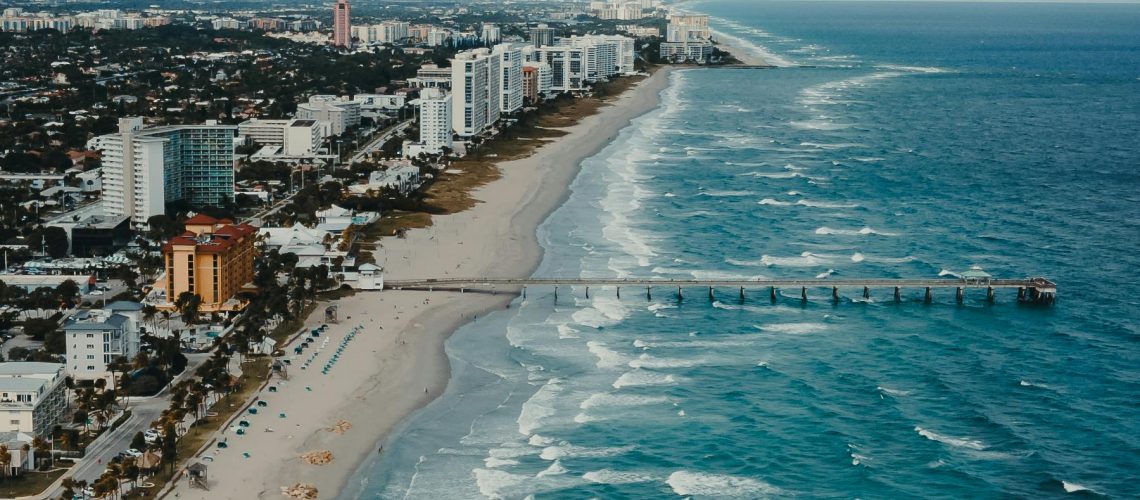Guest Post by Mohamed Abdelhafez, 2023-2024 Sustainability Leadership Fellow, and Ph.D. Student in the Department of Civil & Environmental Engineering at Colorado State University
The Challenge of Sea Level Rise
Imagine your favorite beach town slowly disappearing beneath encroaching waves. Rising sea levels, a consequence of climate change, pose a significant threat to coastal communities worldwide. Sea level rise brings a two-fold punch: chronic flooding and erosion [1]–[3]. Higher baseline water levels mean everyday tides reach further inland, salinating groundwater and threatening infrastructure. Storms, already destructive, cause even more devastating storm surges as rising seas give them a higher platform to launch from [4]–[6]. Erosion eats away at coastlines, putting homes and businesses perched on cliffs at risk. But amidst these challenges lie opportunities for resilience and adaptation.

Planning for a Resilient Future
Coastal communities are not sitting idly by. Many are taking a proactive approach, building resilience through a combination of “hard” and “soft” solutions[7]–[9]. Hard solutions involve physical barriers like seawalls and levees, while soft solutions focus on natural defenses such as mangroves [10], restoring wetlands, and dunes that all buffer the impact of waves and storm surges.
Another key to resilience is planning for retreat. As some areas become untenable, communities are exploring managed retreat strategies, such as buying out vulnerable properties and relocating residents to higher ground.
The fight for coastal resilience is complex and expensive, but it’s a fight worth having. These communities are not just places on a map – they’re homes, cultures, and economic hubs. By adapting, they can not only survive but thrive in a changing world.

The Hidden Costs of Sea Level Rise
But the challenges don’t end with what’s visible above the surface. My recently published study [11] reveals a hidden danger lurking beneath – the potential for saltwater intrusion (SWI) to weaken and damage building foundations.
SWI occurs when saltwater seeps inland, contaminating freshwater supplies and reaching the reinforcement steel bars in a building’s foundation. This saltwater is highly corrosive, especially for common building materials like steel-reinforced concrete. The study focused on Mobile Bay, Alabama, estimating that under extreme sea level rise scenarios, annual foundation repair costs for nearly 137,000 houses could reach a staggering $90 million by 2100.
These costs are often hidden and unexpected. SWI damage may not be immediately visible and might not be covered by traditional homeowner’s insurance and inspections. Early detection through regular inspections, recommended every ten years, is crucial to prevent minor issues from evolving into major structural problems.
Taking Action
The study’s findings have significant implications for coastal communities [11]. Building codes may need to be revised to factor in the risks of SWI. Imagine thicker concrete slabs, more resistant building materials, and protective barriers becoming standard features in coastal construction projects.
So, what can you do? Stay informed about sea level rise and how it’s affecting your community. Support organizations working on coastal resilience initiatives. Advocate for climate change policies that reduce greenhouse gas emissions and slow sea level rise. Talk to your local officials about sea level rise plans and building code updates. Consider having your foundation inspected for signs of SWI damage. By raising awareness and taking preventive measures, we can safeguard our coastal communities from the rising tide – both above and below the surface.
References:
[1] W. Sweet, J. Park, J. Marra, C. Zervas, and S. Gill, “Sea Level Rise and Nuisance Flood Frequency Changes around the United States,” NOAA Technical Report NOS CO-OPS 073, no. June, p. 58, 2014.
[2] NOAA, “Global and Regional Sea Level Rise Scenarios for the United States,” NOAA Technical Report NOS CO-OPS 083, no. September, pp. 1–56, 2022.
[3] S. Kidwai et al., “The Indus Delta—Catchment, River, Coast, and People,” Coasts and Estuaries, pp. 213–232, 2019.
[4] IPCC, “Climate Change 2014: Synthesis Report. Contribution of Working Groups I, II and III to the Fifth Assessment Report of the Intergovernmental Panel on Climate Change . IPCC, Geneva, Switzerland, 151 pp. In IPCC AR5 Synthesis Report website.,” 2014.
[5] K. A. Emanuel, “Downscaling CMIP5 climate models shows increased tropical cyclone activity over the 21st century,” Proceedings of the National Academy of Sciences of the United States of America, 2013.
[6] A. Gori, N. Lin, D. Xi, and K. Emanuel, “Tropical cyclone climatology change greatly exacerbates US extreme rainfall–surge hazard,” Nature Climate Change, vol. 12, no. 2, 2022.
[7] J. Chow, A. Fenton, C. Stott, and J. Taub, “Confronting Climate Change in Bangladesh: Policy Strategies for Adaptation and Resilience,” Springer, vol. 28, 2019.
[8] A. Becker, A. Hippe, and E. Mclean, “Cost and Materials Required to Retrofit US Seaports in Response to Sea Level Rise: A Thought Exercise for Climate Response,” Journal of Marine Science and Engineering, 2017.
[9] J. Hinkel et al., “Coastal flood damage and adaptation costs under 21st century sea-level rise,” Proceedings of the National Academy of Sciences of the United States of America, 2014.
[10] K. W. Krauss et al., “How mangrove forests adjust to rising sea level,” New Phytologist, 2014.
[11] M. A. Abdelhafez, B. Ellingwood, and H. Mahmoud, “Hidden costs to building foundations due to sea level rise in a changing climate,” Scientific Reports, vol. 12, no. 1, p. 14020, 2022.






